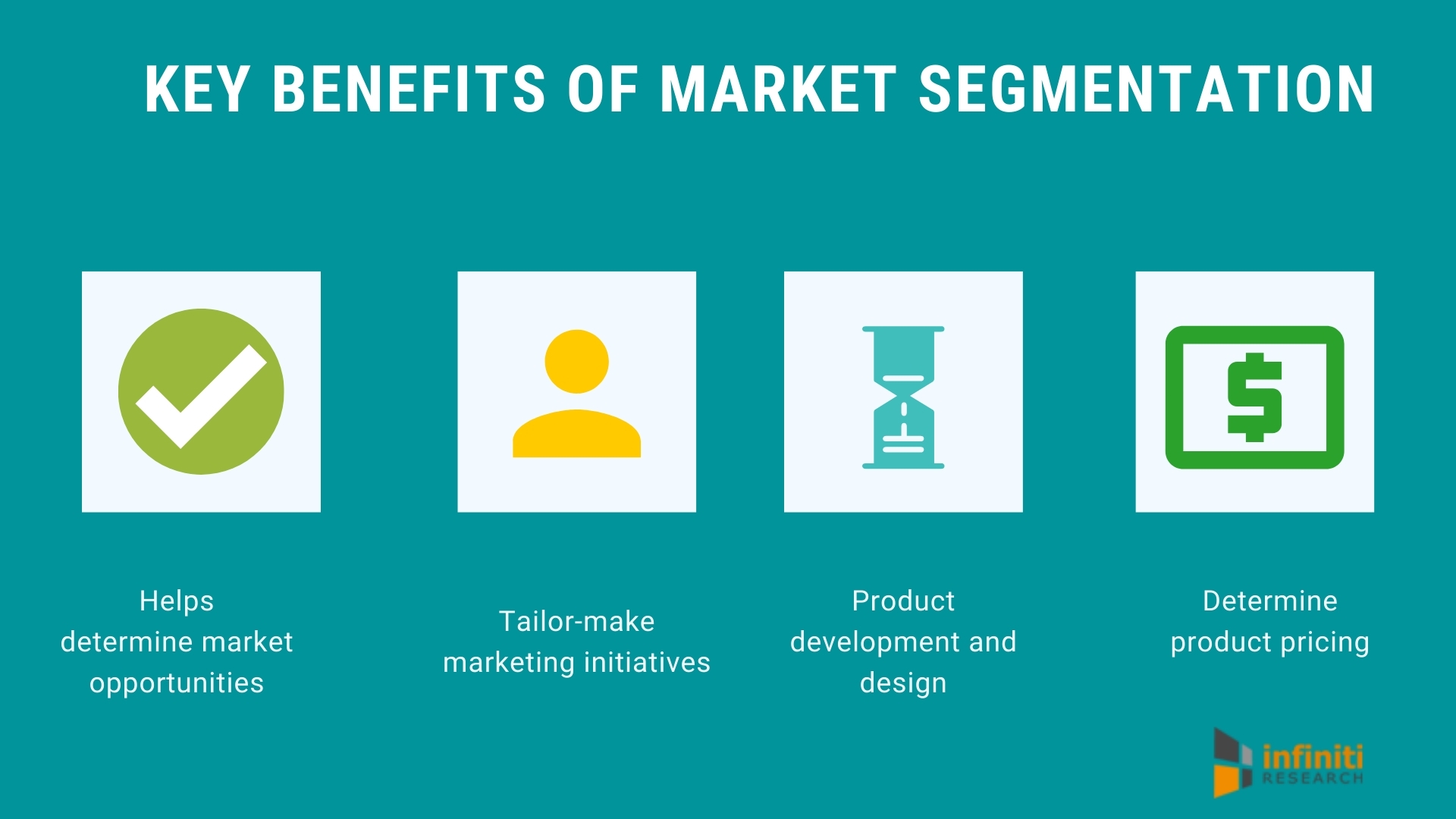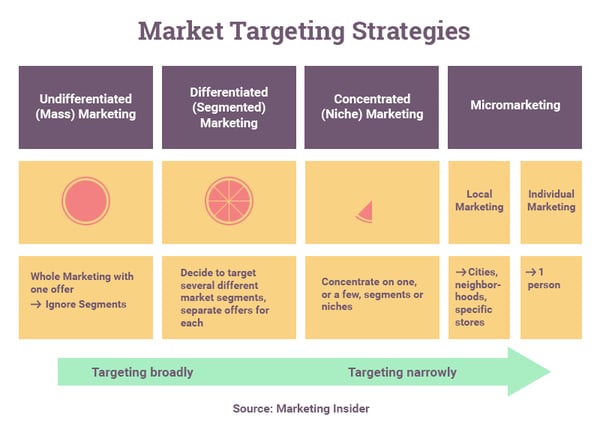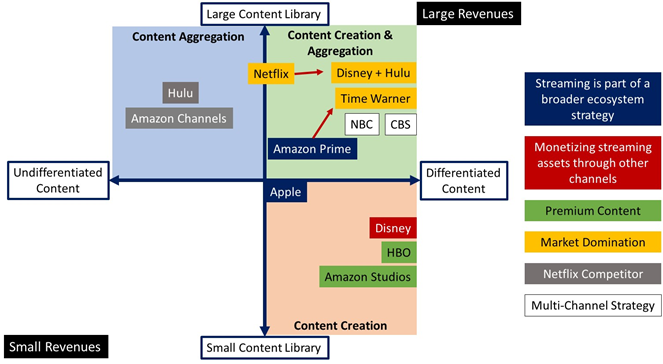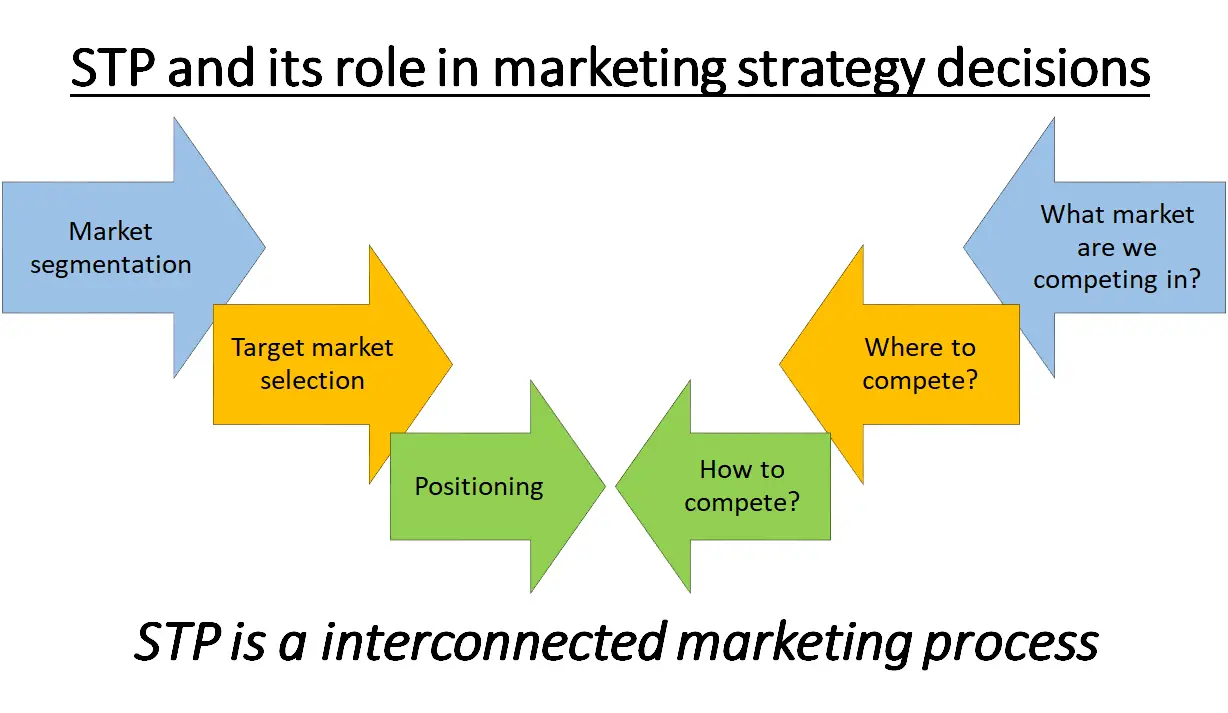Market Segmentation, Targeting, and Positioning Red Bull, Uber, Amazon Prime
Introduction
STP or Segmentation, Targeting, and Positioning are the most discussed approaches of the marketing industry. This is an effective approach that organizations use globally especially when they decide to launch a product or service or enter a new market. This tool is used to prioritize the market propositions and establish a communication process with the customers. In this assignment, the digital TV industry and the taxi industry are the two most significant example, where STP process is used for innovation and create something new than the traditional existing system. Along with this, the energy drink industry is also discussed followed by recommendations for each of them. Below, each step of the STP Process is discussed shortly along with its benefits and criticisms.
Critical Evaluation of STP
Segmentation
According to researcher David
Chambers (2019), segmentation is the first process in this approach which
involves dividing and subdividing the market into smaller segments, so that
marketing can be focused and streamlined. This helps in identifying the exact
needs of the market and creates effective strategies so that the need can be
fulfilled. This is especially needed because nowadays the expectations and the
demands of the consumer are diverse and at such a situation, narrowing down the
entire market helps in gaining useful insights. Segmentation can also
successfully impact consumer behavior existing within the market.
Benefits and Criticism
The main criticism as pointed out
by Flaherty, et al., (2018)is that the diverse customer needs often create
instability within the segments. This is because needs and wants will always be
changing according to the changing dynamics of the market. In such cases,
segments may disappear or may merge to create that need. But despite its
criticism one of the biggest benefit as stated by Dolnicar, et al., (2018)is
that the segmentation process creates a competitive advantage for the product
or service. It also provides a way for further market expansion if carried out
effectively. Thus, although criticism exists, this is still considered popular
and used by many across the world.

Figure 1: Segmentation process benefits
Targeting
Targeting is the next step in the
STP Process, where target consumers are segregated from the segments.
Researcher Nella(2016), states that this is the key to determining an
organization's success. The targets are the specific consumers that the company
wants to market their products. As a result, all promotional, advertising, and
other marketing strategies are directed to it. This is the first step in
establishing a communication channel with the customer and reaching out to them
to fulfill their needs. The targets are different for different companies and
understanding their needs is very important.
Benefits and Criticisms
The main criticism is tied to as
mentioned earlier, that is, understanding the needs of the targets. Scholars
McAlexander, et al., (2015) point out that the choice of the target is also
important and it must be carried out by experienced marketers. Most often the
companies are too concentrated on the target that they forget the actual
mission and vision of the organization they are in. However, the main benefit
of targeting is creating a communication channel and fulfilling the demands and
wants of the consumer. Researchers Leonidou et al., (2019) state that this is
what makes a company successful and increases consumer loyalty and also brand
visibility and awareness.

Figure 2: segregating exclusive targets from the segments
Positioning
The last and final step in the STP
approach is that of positioning. Positioning strategies give the consumers an
idea by which they relate to the product. For example, eCommerce is always
associated with Amazon and eBay, selling handmade goods with Etsy and coffee
with Starbucks! These companies have created a strong positioning image in the
minds of the consumers which dictates the very essence of the product with
their brand name. Mission and vision statements are built at this stage and
future planning is also done according to the positioning policies.
Benefits and Criticisms
The main benefit of positioning
according to researcher Dudovskiy (2016), is that it gives the product or
service the Unique Selling Point, by which it is differentiated from its
competitors. The main goal of the STP Process has always been creating a
competitive advantage and this is where it all forms together. Scholars Ball, et
al., (2018) also say that positioning creates a brand image and gives value to
the product, which further influences customer loyalty, customer retention, and
also increases sales. However, the criticism lies in the fact that positioning
is often confused with a differentiation strategy(Du & Wang, 2018).
Marketers use them to manipulate the minds of the customers, into buying
something that they do not require. Binge purchase or hoarding is hugely
credited to positioning statements (Coughlan & Goldman, 2017).
.

Figure 3: positioning the products in the right way.
Critical Appraisal of STP
The STP Process of Digital TV Industry
The segmentation, targeting, and
positioning are most well defined in the digital TV industry with digital
platforms like Netflix, Amazon Prime TV, and YouTube. The concept of
traditional TV viewing is slowing down as countries become more digitized due
to globalization. Studies have shown than more than 83 million people globally
tune into the internet to watch shows, documentaries, mini-series, and much
more. Netflix is currently the leader in the industry; the segmentation is done
with the help of AI which monitors watch patterns of clients, demographics, and
age. Their main targeting is done via a membership fee, where a one-month free
trial is offered to the customers. According to researchers Hinterhuber &
Liozu (2019), psychographics and behavioral factors are used here, as
memberships are always renewed. Similarly, Amazon Prime connects its membership
with its eCommerce website, where Prime membership gives exclusive access to
Amazon TV and also same-day delivery of products.
According to Johnson(2016)
positioning both the companies follow more or less the same positioning
statement; that is comfort and convenience. These factors are stressed upon
while communicating with the customers. These have a significant impact on the
minds of the consumers since everyone wants comfort and convenience within the
walls of their home. They do not need to go to the theaters for entertainment,
rather entertainment comes to them! Amazon also uses adaptive positioning, by
offering special discounts to inactive users. This way, the company can attract
the audiences that they had lost for some time!

Coming to YouTube, this is by far
the most popular digital platform for videos. There are millions of free movies
from all genres and countries and videos are unlimited. According to data by
Kim (2010), 500 hours of content are uploaded every minute and the platform has
almost 1 month monthly users, higher than Amazon and Netflix. The main
targeting strategy used by YouTube is giving the power to create videos in the
hands of the subscribers. Thus, unlike its competitors, the videos are not
limited to just films and documentaries. This is also by the positioning
statement where subscribers are allowed to earn income by making videos.
According to Vizard (2016), the company focuses on hyper-growth for its
positioning in the market.
Another company that needs to be
mentioned is Tik-Tok, which has received immense popularity in the lockdown
scenario. According to an article in The Guardian (Khan, 2020), the organization
faced a surge of visibility as everyone in-home quarantine started using the
platform, out of sheer boredom. The Covid-19 situation has been used as a
positioning statement by the company, as most people are forced to spend their
time at home. Moreover, the biggest advantage of Tik-Tok is that the
subscribers do not need a follower base for videos to go viral!

The STP Process of the Energy Drink Industry
In the energy drink industry, the biggest market leaders are Red Bull and Monster beverage. Red Bull is a very famous energy drink that was first manufactured by Dietrich Mateschitz in Austria in the early 1900s (Quincey, 2016). The biggest market gap that was identified by the company is that during the 1900s, there was no energy drink for the athletes, which would provide them nutrition and energy while at sports. Moreover, he also wanted to create a drink that would act as a supplement as lives were getting busier by the day. According to researcher Brito (2019), the main targeting and positioning methods were the Buzz marketing strategy of the Red Bull. This strategy had the maximum impact on the minds of the consumers as the European market during its initial stage was an immature market. As a result of which, the minds of the users could easily be manipulated. Researchers Baker & Hart (2016), also state that Red Bull has very strong advertising features when it comes to positioning. The slogan and logo have a great impact on the users; the tagline, 'Red Bull gives you wings' is the most popular that is used even today. Another popular slogan, 'Red Bull vitalizes body and mind' is also indicative of the fact that there are added nutrients in the drink to make the drinkers energetic. This was a major influencing factor which impacted customer loyalty and retention for the company.
Monster Energy drink is a product
of Hansen Corporation and distributed by the Coca-Cola Company in various parts
of the globe. Red Bull's competitor Monster also was successful as an energy
drink but had a different customer segment than Red Bull. The target groups
were more focused on youth sports like skateboarding, surfing, motocross,
wakeboarding, and others. The company also uses demographic factors and as a
result is most popular in Australia and New Zealand, unlike Europe in the cases
of Red Bull(Masek, et al., 2016). Monster used a lot of campaigns with sports
stars for its positioning statement. Greg Lutzka, a very popular skateboarder
was used in several of its campaigns and received huge popularity between its
fans and followers. These campaigns were also cleverly conducted in summer, to
give a feeling of relief in the minds of the viewers that they would associate
Monster drink with a sense of relief and relaxation in the summer heat.

The STP Process of the Taxi/Cab Industry
The taxi industry is one of the
traditional industries that has undergone massive changes much like the Digital
TV industry as discussed earlier. The most popular being companies like Uber
and Ola, who have popularised their positioning by ride-sharing economy model.
According to the researcher (Cohen, et al., 2016) Uber has the most successful
of the STP Process in this economic model. Segmentation and targeting is a very
important part, where the company uses demographics, age, behavioral factors,
and others to develop pricing strategies, sharing rides, and more. Through this
strategy, the company has introduced Uber Pool and Uber Share and also Uber
Premium for various segments of customers with varying income levels. Bike
Sharing is also a very popular medium with cost-conscious consumers.
Much like its competitors Ola Cabs
has positioned itself with a strong targeting and positioning strategy by
venturing out in many rural parts of the world. According to
researchers Panigrahi, et al., (2018) Ola is focused on eCommerce business models
like Amazon and Flipkart where a lot of local resources are used. Social media
is used extensively to create awareness in the minds of the consumers and
pricing strategy is less than the regional taxi service industry. However,
researchers Tendulkar & Singh(2019), say that while Uber is modeled on an
international basis, Ola operates regionally and is the most popular in India.
One important segments that are used by both these two companies are leisure
and business travelers, who can travel anywhere without their car. Tourists and
business persons form a considerable percentage of their segments.
Uber's Careem buy shows a pivot in international strategy - Business Insider
Much like its digital TV
counterpart, comfort and convenience are the two strong positioning words that
are used by the company. Additional services like AC, radio, film viewing is
also provided to users, where comfort is taken to the next level, but with the
decent fare. This is the most important part of the STP process that is used by
these companies. There are many other companies like them like Meru Cabs,
Gojek, Lyft, Easy Taxis, Gett, Careem and others which are also using the STP
in sharing economy model in various regions of the world.

Conclusion
After discussing various industries
and companies, it is evident to note that the STP approach depends on the
situation an organization is in. There are also many influencing factors, both
internal and external according to which a company needs to mold its
strategies.
Generic Recommendations
Recommendation 1
As seen in the digital TV industry,
Netflix has the maximum influence, and often the word 'Netflix' and spending
time at home is seen in the same sentence. One recommendation that both Netflix
and Amazon Prime TV can take is giving the feature to make their videos to the
subscribers, like YouTube and TikTok. The company can also allow access for
viewers to watch shows and films in other locations. Usually, the shows are as
per demographics and one particular country may not have access to films and
shows as other countries would have. This is one of the ways, Amazon Prime and
Netflix can increase their popularity further, to keep users engaged in their
platform. This will also be a very strong positioning statement!
Recommendation 2
The main recommendation here would
be for Monster drink, to expand its customer base like Red Bull. With marketing
strategies and powerful positioning statement, Red Bull can gain a stronghold
in the international market, while Monster is still concentrated in certain
areas. The main focus for Monster needs to be growth and market expansion
through the STP approach.
Recommendation 3
Uber's marketing strategy is the
most discussed academically and the most sought after by other companies. Uber
has formed an inspiration to many companies like Ola, Lyft, Meru Cabs, and
others. Almost every country has its form of sharing cab service and bike
services at convenient costs. However, visibility and awareness are not the
same for many and this is where the difference lies. Smaller companies must
follow Uber's strategy to stay ahead of the competition.

References
Baker,
M. J. & Hart, S., 2016. The Marketing Book. 7, illustrated,
reprint, revised ed. London: Routledge.
Ball, L., McCauley,
A. & Paul, T., 2018. Evaluating the Implementation of a Farmers’ Market
Targeting WIC FMNP Participants. Sage Journals, 19(6).
Brito, D. C., 2019. Sports
sponsorship and the impact on a brand's purchasing intention and
recommendation: Red Bull, more than wings. 1st ed. s.l.:T&D-DM -
Dissertações de mestrado.
Cohen, P. et al.,
2016. Using Big Data to Estimate Consumer Surplus: The Case of Uber. , s.l.:
NBER Working Paper No. 22627.
Coughlan, A. &
Goldman, E., 2017. Mary Kay Inc.: Direct Selling and the Challenge of
Online Channels, s.l.: Kellogg School of Management Cases.
David Chambers, S. S.
M. J. S., 2019. Market and Regional Segmentation and Risk Premia in the First
Era of Financial Globalization. The Review of Financial Studies, 31(10),
p. 4063–4098.
Dolnicar, S., Grün,
B. & Leisch, F., 2018. Market Segmentation Analysis. Market
Segmentation Analysis. Management for Professionals ed. Singapore: Springer.
Dudovskiy, J., 2016. Tesco
Segmentation, Targeting and Positioning, s.l.: Research Methodology.
Du, J. & Wang,
Y., 2018. The Relationship Between Brand Positioning and Packaging Color
of Chocolate. s.l., Proceedings of the 4th International Conference on
Arts, Design and Contemporary Education (ICADCE 2018).
Flaherty, K. E. et
al., 2018. Sales scholarship: honoring the past and defining the future (Key
takeaways from the 2018 American Marketing Association Faculty Consortium:
New Horizons in Selling and Sales Management). Journal of Personal Selling
& Sales Management, 38(4), pp. 413-421.
Hinterhuber, A. &
Liozu, S. M., 2019. Pricing Strategy Implementation: Translating Pricing
Strategy into Results. illustrated ed. New York: Routledge.
Johnson, C., 2016. Online
Original Shorts: a public service response to Netflix?. Atlanta,
Conference paper presented at SCMS Atlanta: Routledge.
Khan, C., 2020. TikTok
is the social media sensation of lockdown. Could I become its new star?, London:
The Guardian.
Kim, J., 2010. User-generated
content (UGC) revolution?: critique of the promise of YouTube, Iowa:
University of Iowa Publication.
Leonidou, L. C.,
Katsikeas, C. S., Samiee, S. & Leonidou, C. N., 2019. Socially
Responsible International Business. s.l.:Edward Edgar Publishing.
Masek, J., Reagan,
B., Dyn, A. & Nguyen, A., 2016. Monster Energy Company, Kirksville:
Truman State University.
McAlexander, J. H.,
Koenig, H. F. & DuFault, B., 2015. Millennials and Boomers: increasing
alumni affinity and intent to give by target market segmentation, s.l.:
Wiley Online Library.
Moniz, J., 2016. Red
Bull’s Marketing Mastermind, s.l.: Medium.
Nella, A. a. C. E.,
2016. Extending tourism marketing: Implications for targeting the senior
tourists’ segment. Journal of Tourism, Heritage & Services Marketing, 2(1),
pp. 36-42.
Panigrahi, A., Shahi,
S. & Rathore, A., 2018. Success Story of a Start-Up–A Case Study of OLA
Cabs. IOSR Journal of Business and Management, 20(2), pp. 30-37.
Quincey, A. J., 2016.
Red Bull: The Wiiings Migration, s.l.: Texas State University Publication.
Tendulkar, S. &
Singh, N., 2019. IMPORTANCE OF M-COMMERCE IN OLA CABS AND ITS BUSINESS MODEL.
Journal of the Gujarat Research Society, 21(14), pp. 170-171.
Vizard, S., 2016. The
challenge of marketing YouTube, s.l.: Marketing Week.

Comments
Post a Comment